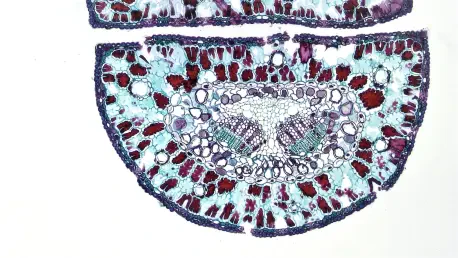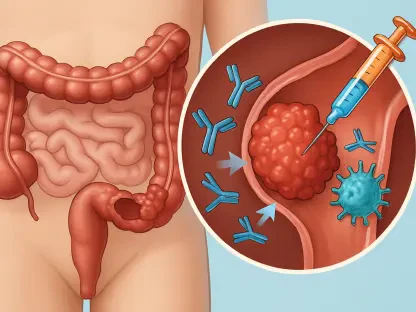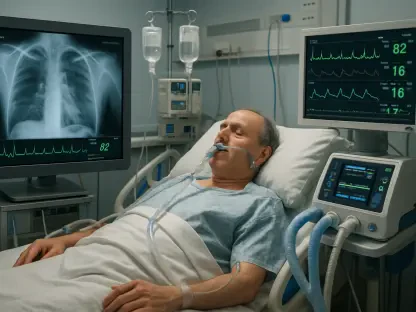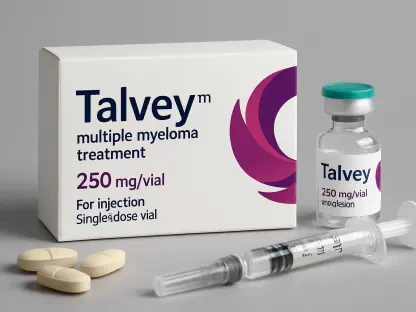The promise of regenerative medicine lies in its potential to repair or replace damaged tissues, restoring function to affected areas of the body. Recent groundbreaking research has illuminated a new frontier in this field by examining the once-overlooked stem cells residing in the nasal cavity’s olfactory system. A team of scientists led by Brian Lin at Tufts University School of Medicine and the Graduate School of Biomedical Sciences has been pioneering efforts to decode the mysteries of olfactory neurogenesis. By doing so, they challenge traditional assumptions regarding the declining sense of smell that often accompanies aging, disease, or environmental factors. Recent findings are heralding a paradigm shift in understanding how our sense of smell can potentially be rejuvenated using innovative three-dimensional models.
At the heart of this scientific inquiry is the groundbreaking development of a three-dimensional olfactory tissue model known as an organoid. This sophisticated model is designed to mimic the dynamic regenerative environment of the nasal cavity, providing researchers with an unprecedented opportunity to explore the processes that govern the generation of olfactory nerve cells. Historically, human nasal cavity research has been fraught with challenges, primarily due to the complexity of the human olfactory environment and difficulties in sourcing pure human olfactory tissues for study. Utilizing mouse tissues, this organoid model represents a significant advancement in replicating conditions necessary to observe the continual formation of new olfactory neurons, spotlighting the roles of specific stem cells such as horizontal basal cells (HBCs) and globose basal cells (GBCs).
The Role of Dormant Stem Cells
In a significant deviation from established knowledge, this study reveals the pivotal role that HBCs play in olfactory regeneration. Previously dismissed as largely inactive unless prompted by injury, these cells were not thought integral to the creation of odor-sensitive neurons. However, the current research offers a revised narrative, emphasizing the important contributions of a specific subset of HBCs characterized by the expression of the KRT5 protein. This subset of cells has demonstrated an active involvement in maintaining, forming, and repairing olfactory tissues. When these HBCs were specifically targeted and removed from organoid models, researchers documented a marked reduction in the ability to form new sensory neurons, underscoring their fundamental role.
Moreover, the study delves into the interrelationship between HBCs and GBCs, revealing a mutually supportive network essential for the robust regeneration of olfactory neurons. This interactive relationship may hold the key to understanding why olfactory functions falter in certain diseases, including viral infections like COVID-19, and with the natural aging process. Through unraveling this symbiotic communication pathway, researchers gain valuable insights into how disruptions in this network could explain reduced olfactory capability. The broader implications for understanding stem cells extend beyond conventional roles, shedding light on a complex web of interactions that sustain healthy olfactory functions.
Implications for Age-Related Olfactory Decline
Another critical dimension of this study pertains to age-related declines in the production of new olfactory neurons. By examining cells derived from mice of varied ages, researchers have discerned a notable decline in the neurogenic capacities of older mice. This decline is associated with a reduced number of GBCs in aging subjects, posing a potential link between diminished olfactory neuron production and age-related depletion of this stem cell type. Even as the findings suggest a connection between aging and olfactory decline, researchers urge caution. They emphasize that further longitudinal studies are necessary to fully decode these complex dynamics, with an ultimate goal of developing interventions aimed at reactivating stem cells in older individuals.
The research also highlights the innovative contributions of Juliana Gutschow Gameiro, affiliated with Tufts University and originally from the State University of Londrina in Brazil, whose dedication has been instrumental in making this model accessible for use in less resource-intensive laboratories. Gameiro’s work in adapting this model ensures that researchers across a spectrum of scientific disciplines, ranging from neurobiology to virology, can engage in olfactory research without prohibitive costs or need for specialized equipment. This broad accessibility is becoming increasingly pertinent as the medical community seeks to address sensory loss resulting from diverse medical conditions, including the recent interest spurred by the sensory symptoms associated with COVID-19.
Future Directions in Therapeutic Models
The allure of regenerative medicine lies in its potential to repair or replace damaged tissues, restoring function to affected parts of the body. Groundbreaking research has spotlighted a new frontier by exploring the overlooked stem cells in the nasal cavity’s olfactory system. Scientists, led by Brian Lin at Tufts University School of Medicine and the Graduate School of Biomedical Sciences, are advancing efforts to understand olfactory neurogenesis. Their work challenges conventional beliefs about the waning sense of smell due to aging, illness, or environmental factors. Recent studies suggest a paradigm shift, with insights into rejuvenating our olfactory sense via innovative 3D models.
Central to this investigation is the creation of a cutting-edge 3D olfactory tissue model known as an organoid, replicating the regenerative nasal environment. It provides researchers the chance to delve into the regeneration of olfactory nerve cells. Historically, research has struggled due to the complexity of human olfactory systems and issues with sourcing pure tissues, but using mouse tissues, this model sheds light on the roles of stem cells like horizontal basal cells and globose basal cells.









